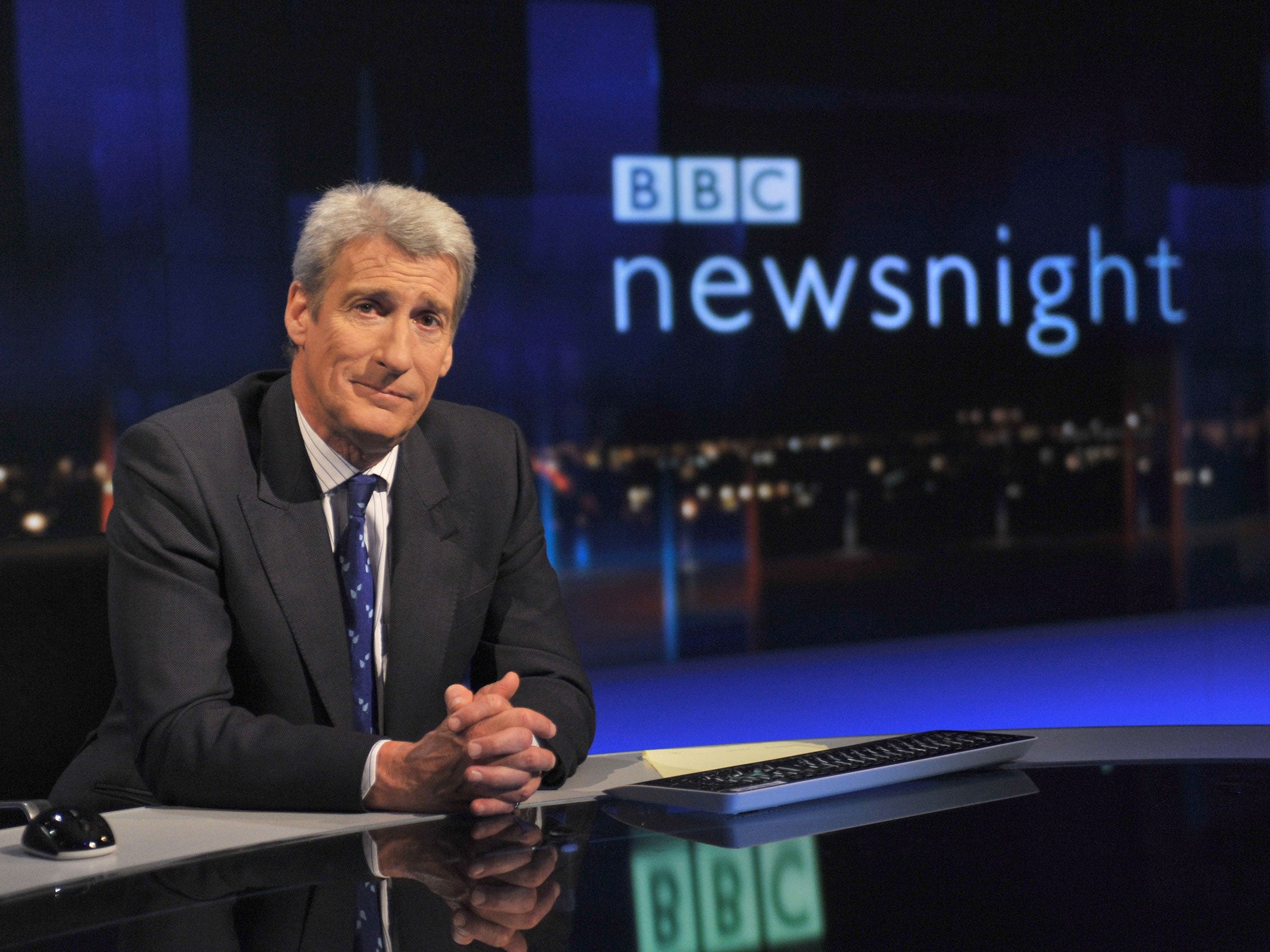BBC attempts to break into a global audience by harnessing the viral power of YouTube

Newsnight and Radio 1 are leading the charge a new strategy by the BBC to break out of the confines of the schedule and find a new global audience via YouTube.
The BBC2 flagship news programme has become active on the Google-owned video platform since the arrival four months ago of new editor Ian Katz and has scored a number of online hits with short clips taken from the show.
The closest Newsnight has come to going viral is an interview with Russell Brand in which the actor and comedian discussed democracy, revolution and beards with Jeremy Paxman. The 10-minute clip has had 9.7m views since it was uploaded in October. The show’s television audience is around 700,000.
An interview with Hunger Games actress Jennifer Lawrence about body image registered 186,000 views, and an investigation into atrocities against Tamils in Sri Lanka - marked with a content warning - drew 98,000 views.
Newsnight is hoping that the tactic, which uses programme branding, will help to grow the programme’s reputation beyond its late-night audience, and particularly internationally, by enabling social media users to share clips. More than 17,000 people have subscribed to Newsnight’s YouTube channel for regular access to its short-form content. The format offers the programme the potential to upload material at various times of the day and become a continual publisher.
Its challenge will be to expand the YouTube subscriber base in a way that has been achieved at Radio 1. The BBC network has caused broadcasters across the United States to take note after it surpassed 1m subscribers to its YouTube channel.
The numbers have grown by 700 per cent since last March thanks to a concerted campaign and a succession of viral hits that has seen music stars such as Kanye West and Eminem asking to appear on the channel.
The 1m subscriber landmark was a triumph for Joe Harland, Radio 1’s head of visualisation, who has a five-strong video team producing new content for a 47-year-old audio medium. He has been able to finally shave his ZZ Top-like beard after hitting the 1m target he set nine months ago after realising that Radio 1 was being trounced on YouTube by the likes of British fashion blogger Zoella (Zoe Sugg) and madcap comedian and games player KSI (Londoner Olajide Olatunji).
“No piece of audio has ever gone viral, that’s a simple fact,” said Harland. “That’s why Radio 1’s strategy is now listen-watch-share. At a time when radio listening is changing and the competition for ears and eyes is everywhere, you can’t rely on running a trailer on your radio show to increase listenership.”
When a filmed Jay-Z interview by Radio 1’s Zane Lowe drew 1m views on the network’s YouTube channel it was watched by fellow rapper Kanye West, who asked the BBC for his own opportunity. The result, in which West made a succession of outlandish claims, had four million views and a further four million when American chat show host Jimmy Kimmel produced a spoof version (with Radio 1 branding).
A clip of Radio 1’s Chris Stark interviewing American actress Mila Kunis last year, has now had more than 12 million views. A performance in the “Live Lounge” by Miley Cyrus drew 9m views, partly because she used the camera to encourage her legions of fans to make it a viral hit. When Radio 1 presenter Greg James did a version of the Cyrus hit Wrecking Ball, it had 4.8m viewers.
Radio 1 rejected the idea of simply filming its radio shows as they are broadcast in favour of making short films for YouTube. Harland said a poorly-lit video stream from the studio would not satisfy a young audience accomplished in using bedroom lamps to artfully light conversations on Skype, the online video communication platform.
With American radio broadcasters trying to find ways to follow young people’s media use, Radio 1’s YouTube success has attracted coverage in USA Today and Billboard. “They have looked over and realised that Radio 1 is setting the bar for how radio can perform in that space,” said Harland. “The audience don’t differentiate between a US piece and a UK piece. For them it’s a global model.”
Subscribe to Independent Premium to bookmark this article
Want to bookmark your favourite articles and stories to read or reference later? Start your Independent Premium subscription today.

Join our commenting forum
Join thought-provoking conversations, follow other Independent readers and see their replies